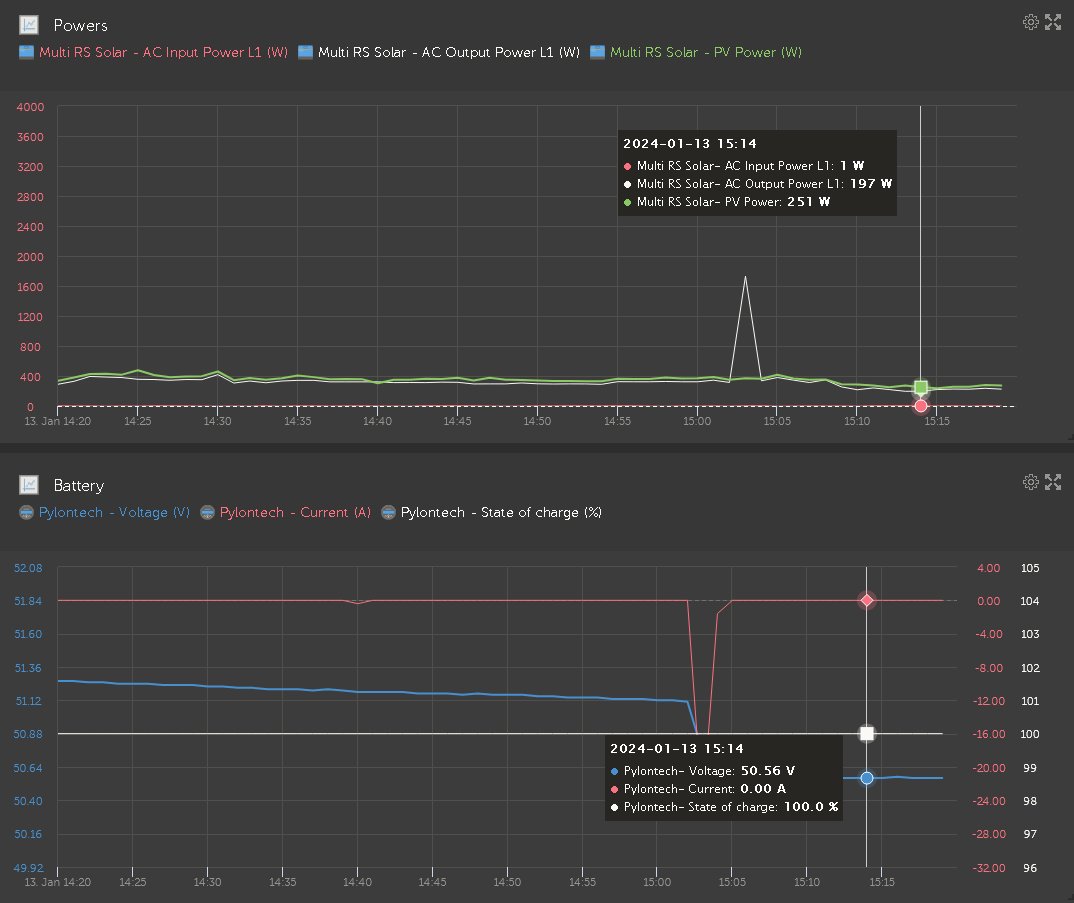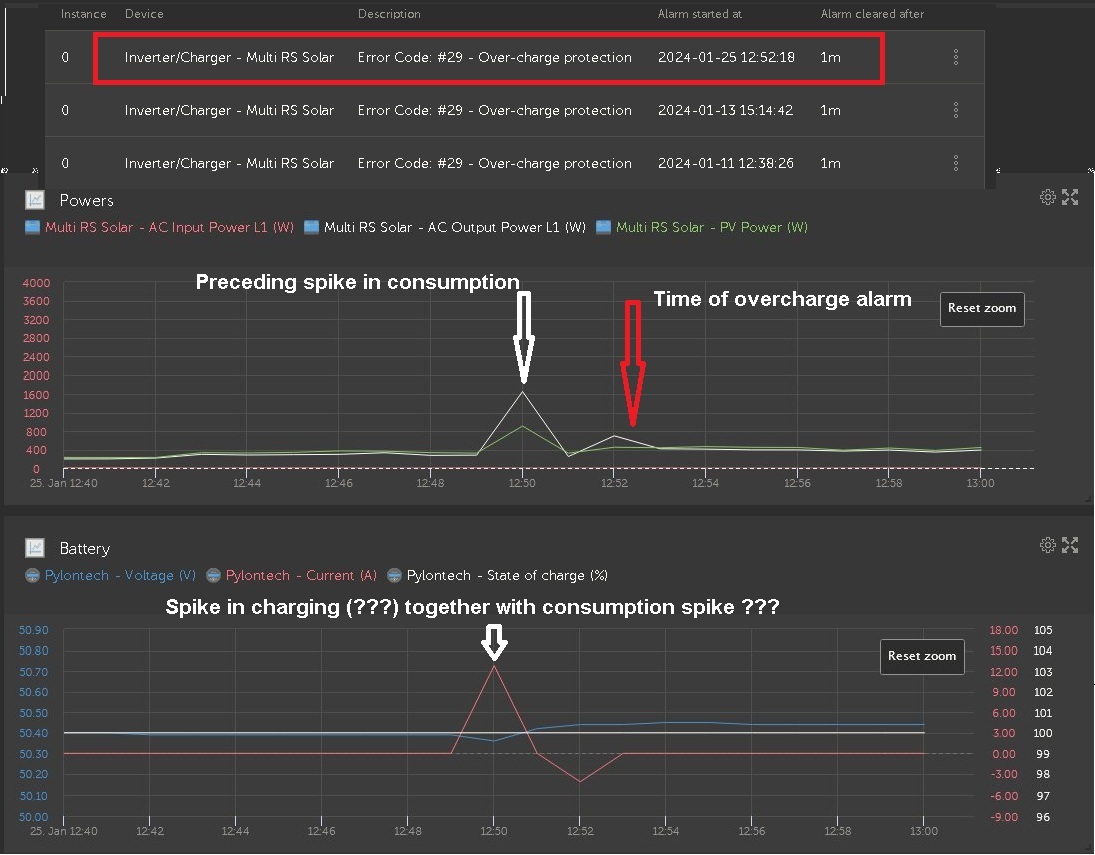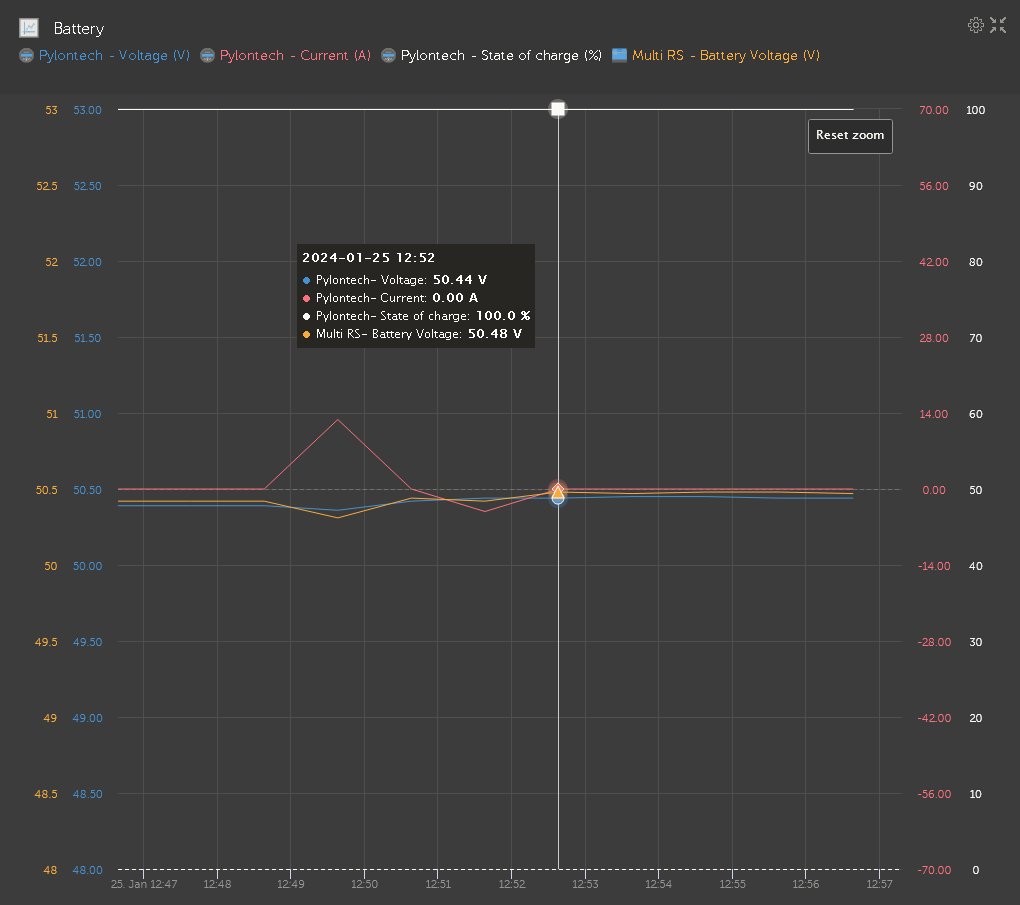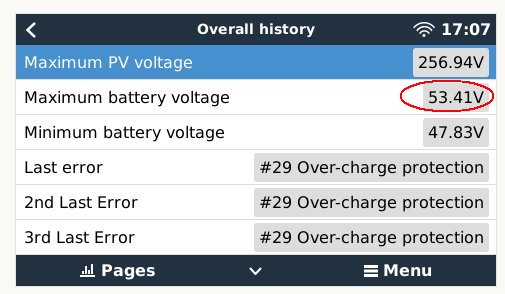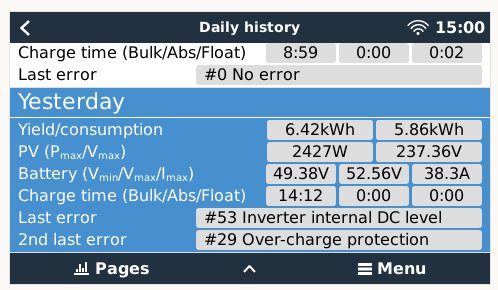Hi All,
As per title and pictures below...
Happened twice already, solved itself after 1 minute.
An almost constant consumption, without rapid change conditions.
Multi RS Solar connected through Cerbo to Pylontech battery.
Battery on idle as reported by BMS and leds, SOC 100%.
All power consumption, about 200W, supplied by solar.
Strange as no causes from the inverter documentation applies:
- no oversized PV array config (5 panels x 50VOC on each tracker)
- battery settings dictated by the master Pylon BMS (6 x US2000C battery bank)
- no another charger in the system
Any advice is welcome.
Thank you in advance!
Markers below at exact time of last occurrence...
Batteries were idling, with the VRM status switching between ESS#3 and ESS#4.

